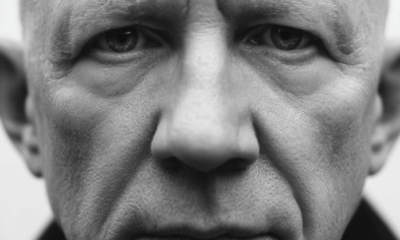Success Advice
You Can Only Solve Your Problems if You Can See Your Problems

Last month I got a call from a friend who was dealing with a whole slew of problems. His business was slowing down, he ran out of money, his wife left him along with his eight-year old daughter and he started drinking again. This situation seemed insurmountable. He’d spent the last few weeks alone in the dark recesses of his mind in an empty house.
On that call, I could feel he was at rock bottom, so I talked to him as a friend, not a pseudo psychologist. Then I shared with him a method I developed years ago to help clarify, face and solve my own problems.
What I’ve found over the years is that when a problem plagues me, it is much less painful when I can clear away all the crap in front of it such as the noise of unidentified emotions and thoughts surrounding it. I call it The Boxing Method, and since it worked for me, I started sharing it with others.
Here are the 3 steps to my method:
1. Draw the boxes
Grab a sheet of paper and draw 3 boxes horizontally, on the same level and of the same size to ensure one is not more meaningful than the other. Next, on top of each box, label them with the following words, in no particular order: Work, family and happiness.
The boxes are merely repositories for those thoughts (i.e. the noise and emotions) that come to mind when thinking about the problem we are confronted with. This gives the thoughts a home, and by doing so, enables us to turn off the noise surrounding the problem itself.
“A broken bone can heal, but the wound a word opens can fester forever.” – Jessamyn West
2. Start writing the words and thoughts
Write any word(s), no matter how illogical, that immediately comes to mind when thinking about the problem. As they come to you, write them in the most appropriate box.
For instance, when I was doing this with my buddy, the first words out of his mouth were “wife left me” and “I’m a loser.” In fact, he spit out 23 others before we were done. We slotted each into the appropriate box. For example, “Wife left me” went into the family box, while “I’m a loser” went into the happiness box.
You don’t need to get it perfect, so don’t overthink this as perfection is far from the end goal here. When finished, if you end up with an empty box, excellent. An empty box is just as meaningful as a box filled to the brim.
WARNING: As these words come to mind, you may start to doubt them, and feel stupid and embarrassed. The words you’re using may not seem to mean anything, however they are the noise and chaos we are looking to rid from our minds. Ignore it all and visualize yourself simply as a scribe for your mind.
3. Let it marinate
Once you’re done, step away from your work of art, and leave it for at least a day. When your mind is ready, it will pull you back to it. This happened to me recently when I was “Boxing” a problem I had last month. It sat for over two weeks on my bookshelf in my office, until, I laid remembered it was there, and I got back to work on it.
Boxing issues is a huge part of the journey to success in solving a problem. Your mind takes the simple exercise of boxing and begins to work on it as the chaos and noise clears. The cobwebs are pulled down and now you can see the door in front of you.
Find your mental key
Now it’s time to fashion the mental key to unlock the door and enter. The key to solving your problem was probably there all along, and it was just clouded by meaningless thoughts and emotions. I’m happy to say my buddy has opened a few doors since we last spoke. His wife is moving back in and he just landed a couple new clients. With the boxing method, he was to see his problems for what they truly are.
“Don’t let mental blocks control you. Set yourself free. Confront your fear and turn the mental blocks into building blocks.” – Dr. Roopleen
What do you think of The Boxing Method I have created? Would love to hear your thoughts below!
Image courtesy of Twenty20.com
Did You Know
How Skilled Migrants Are Building Successful Careers After Moving Countries
Behind every successful skilled migrant career is a mix of resilience, strategy, and navigating systems built for locals.

Moving to a new country for work is exciting, but it can also be unnerving. Skilled migrants leave behind familiar systems, networks, and support to pursue better job opportunities and a better future for their families. (more…)
Life
10 Research-Backed Steps to Create Real Change This New Year
This New Year could finally be the one where you break old patterns and create real, lasting change.

Every New Year, we make plans and set goals, but often repeat old patterns. (more…)
Change Your Mindset
The Silent Skill That Makes People Respect You Instantly
What truly earns respect and why most people go about it the wrong way

Everybody craves respect but not everyone earns it. Some people believe that a title, years of experience, or a position of authority automatically entitles them to respect. (more…)
Entrepreneurs
The Essential Skills Every Entrepreneur Needs In 2026
Success in the digital age isn’t about luck. It’s about mastering the skills that separate dreamers from doers.

When I was 22 years old, I started my first side hustle as a ghostwriter. (more…)
-

 Change Your Mindset4 weeks ago
Change Your Mindset4 weeks agoHow to Turn Your Mind Into Your Greatest Asset (Instead of Your Enemy)
-

 Change Your Mindset3 weeks ago
Change Your Mindset3 weeks agoThe Silent Skill That Makes People Respect You Instantly
-

 Life3 weeks ago
Life3 weeks ago10 Research-Backed Steps to Create Real Change This New Year
-

 Did You Know2 weeks ago
Did You Know2 weeks agoHow Skilled Migrants Are Building Successful Careers After Moving Countries
-

 Tech3 weeks ago
Tech3 weeks agoWhat’s in a Name? How to Get Your Domain Right
























